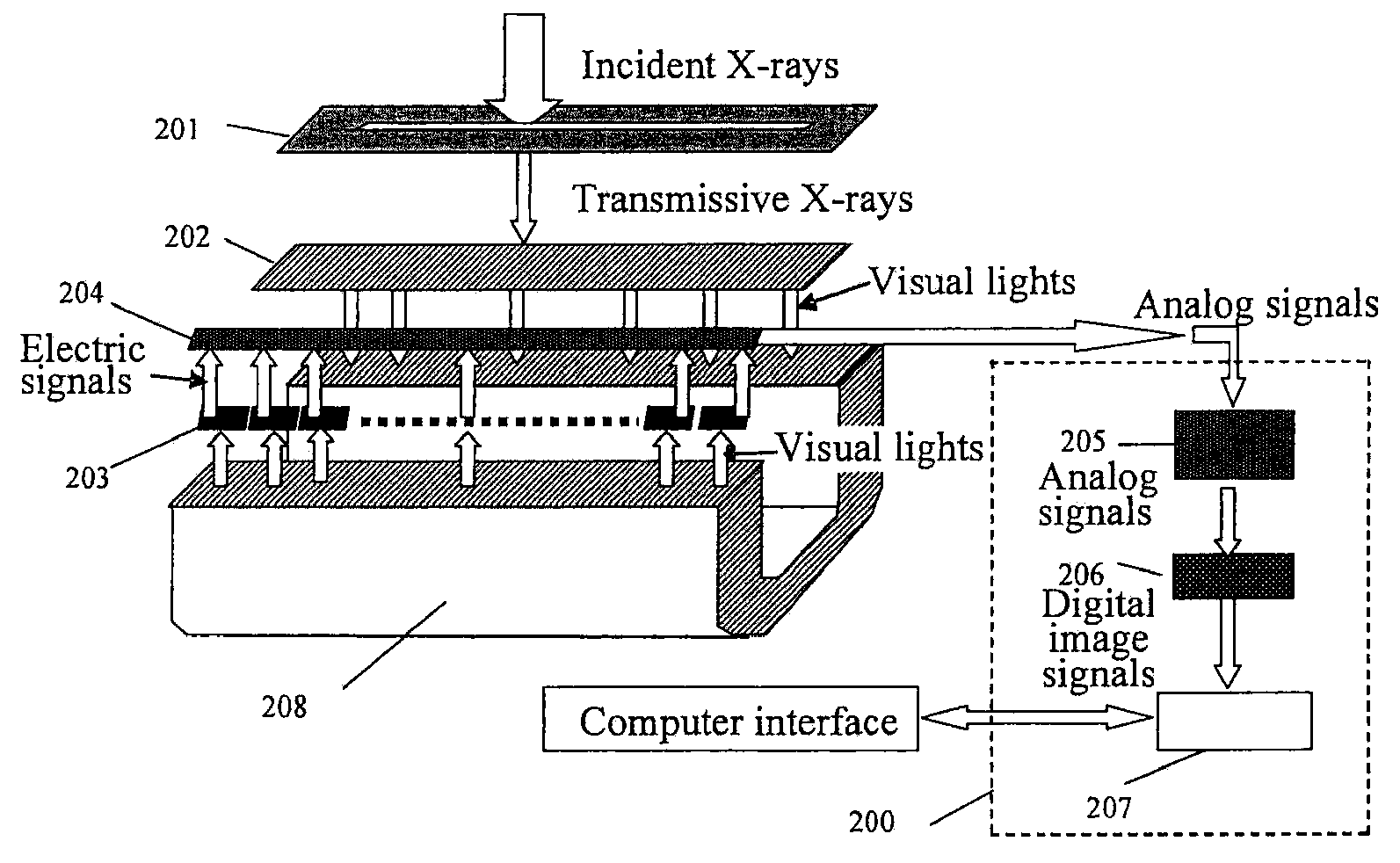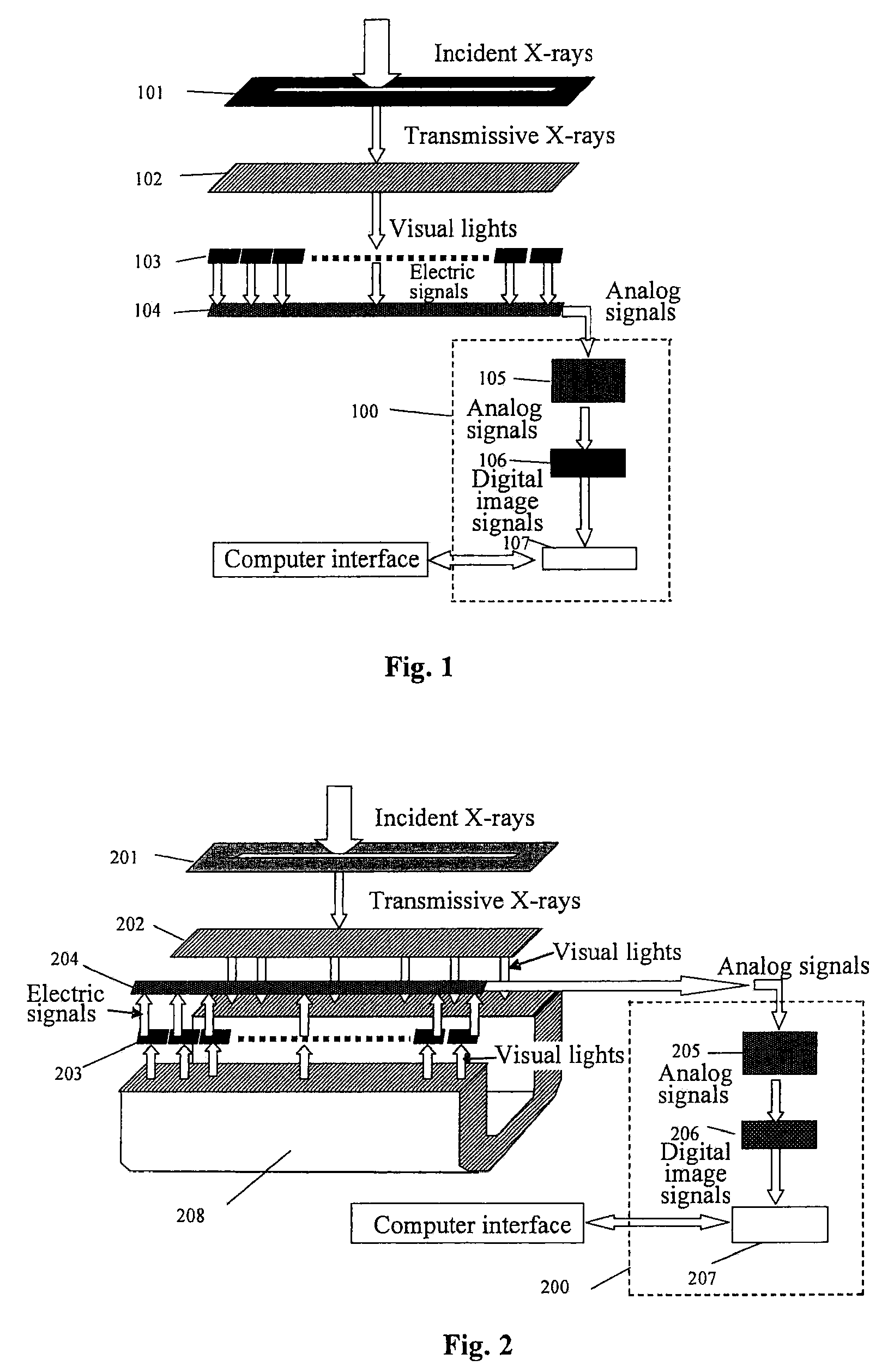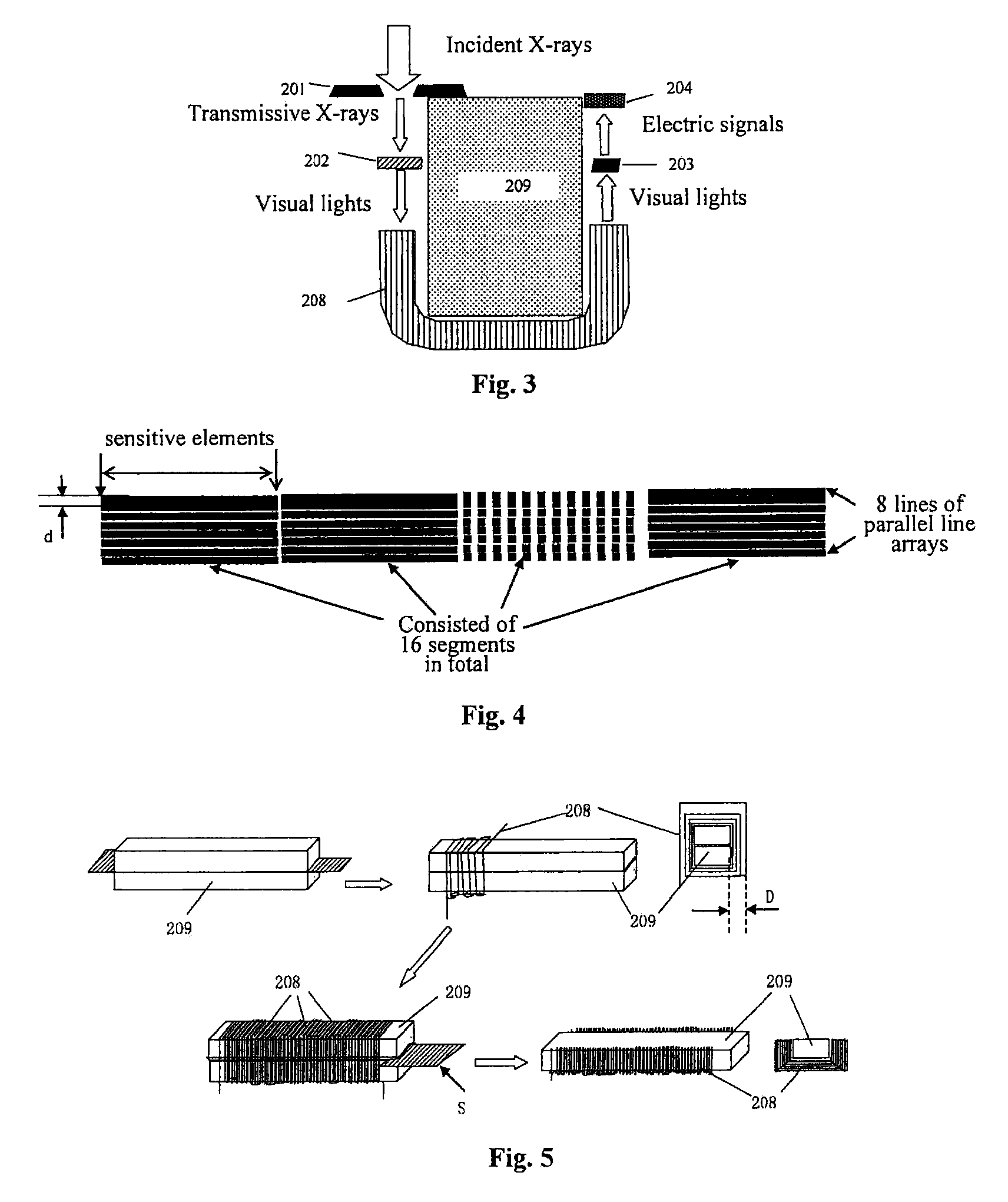X-ray line array detector
a line array detector and detector technology, applied in the field of x-ray line array detectors, can solve the problems of etch damage to the integrated circuit, photosensors and the integrated circuits behind them, and achieve the effects of prolonging the lifetime of the line array detector, avoiding damage, and greatly enhancing the anti-radiation performance of the detector
- Summary
- Abstract
- Description
- Claims
- Application Information
AI Technical Summary
Benefits of technology
Problems solved by technology
Method used
Image
Examples
first embodiment
The First Embodiment
[0023]This embodiment is consisted of an X-ray probe, a signal acquisition circuit, and a low voltage power source combination.
[0024]As illustrated in FIG. 2 and FIG. 3, the X-ray probe is a closed aluminum alloy chamber including a collimator 201, a flicker body 202, an array of photosensors 203, and a shift amplifier 204. A front panel is made of a lead antimony alloy material with shielding functions, and at its upper part, there is provided the bar collimator 201 of a 410 mm length and a 1.6 mm width. The top of the collimator is sealed with an aluminum film to serve as an incident window for X-rays, and the flicker body 202 is provided below the collimator and converts incident X-rays energy into light energy with a wavelength of 200˜1000 μm. An U-shaped bundle of light-guide fibers 208 is provided between an emergent surface of the flicker body 202 and an incident surface of the array of photosensors 203, so that X-rays transmitting through the flicker body...
second embodiment
The Second Embodiment
[0033]This embodiment as illustrated in FIG. 6 is structured substantially the same as the first embodiment except that the incident surface of the bundle of light-guide fibers 308 is a bevel, X-rays pass through the collimator 301 and then are converted into visual lights through the flicker body 302, and the visual lights irradiate the array of photosensors 303 at the emergent surface after passing the inclined incident surface of the bundle of light-guide fibers 308 and are converted into electric signals in proportion. Thus, X-rays transmitting through the flicker body 302 can not irradiate the photosensors and their integrated circuits, and the photosensors are perfectly protected and the lifetime prolonged. The incident and emergent surfaces of the bundle of light-guide fibers 308 are also bonded respectively with the emergent surface of the flicker body 302 and the incident surface of the array of photosensors 303 with a coupling agent. A shielding body 3...
PUM
 Login to View More
Login to View More Abstract
Description
Claims
Application Information
 Login to View More
Login to View More - R&D
- Intellectual Property
- Life Sciences
- Materials
- Tech Scout
- Unparalleled Data Quality
- Higher Quality Content
- 60% Fewer Hallucinations
Browse by: Latest US Patents, China's latest patents, Technical Efficacy Thesaurus, Application Domain, Technology Topic, Popular Technical Reports.
© 2025 PatSnap. All rights reserved.Legal|Privacy policy|Modern Slavery Act Transparency Statement|Sitemap|About US| Contact US: help@patsnap.com



